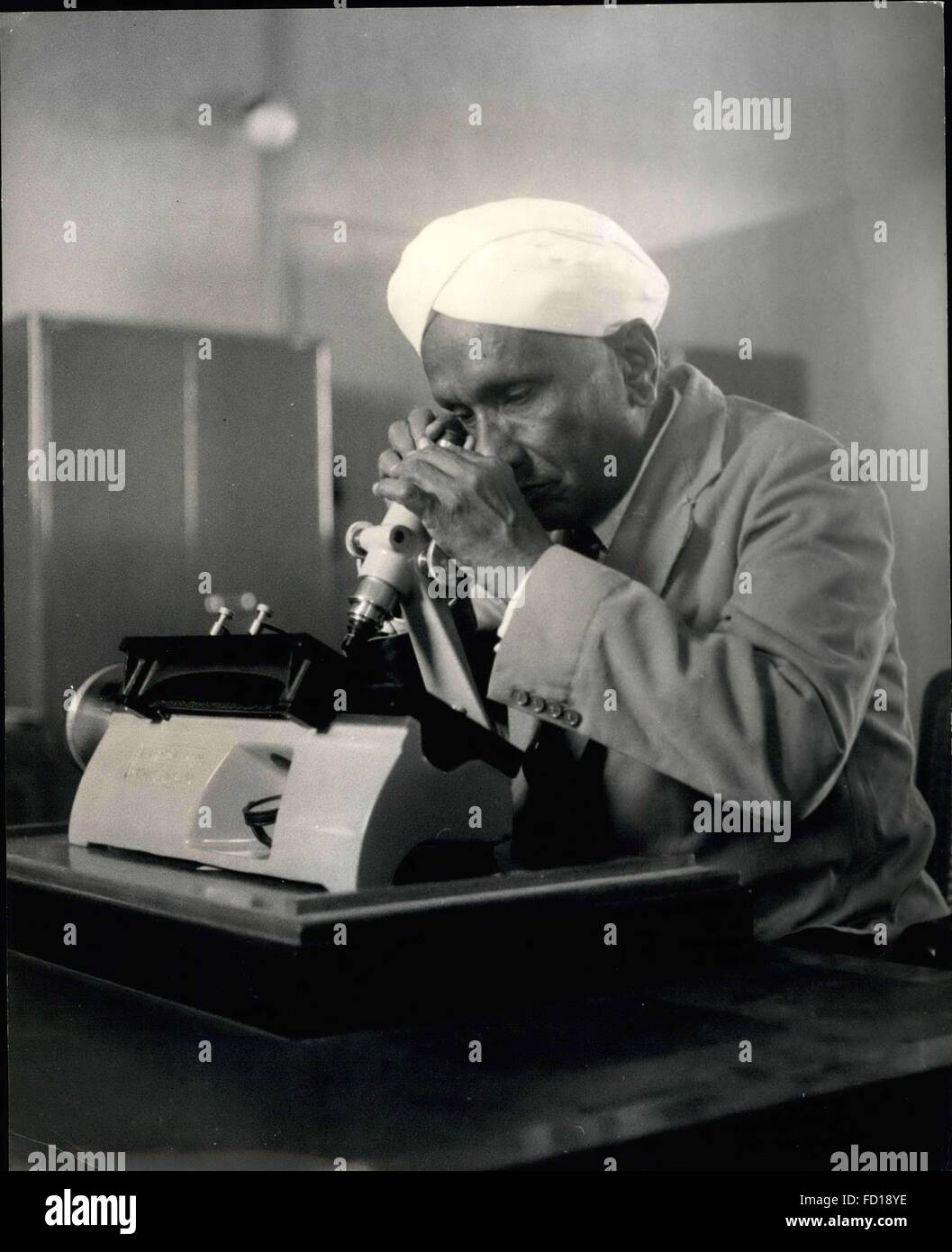1968 - India's leading Scientist Evolves New Theory On Diamonds There Are Four Species Of The World's Most Precious Stone. Years of study in his laboratory have led Sir C.V.Raman, world-famous scientist, to declare a new theory on diamonds. This Nobel prize-winner, whose full name is Bharata Ratna Raja-Sabhabhushana Sir Chandrasekhara Venkata Raman Kt., recent winner of the Lenin Peace Prize and discoverer of the Raman Spectrum and many chemical advances of use in the Oil industry, claims that there are four and not one type of diamond. In his Mysore Laboratory, in the Raman Research Institute

Image details
Contributor:
ZUMA Press, Inc. / Alamy Stock PhotoImage ID:
FD18YEFile size:
72.4 MB (1.1 MB Compressed download)Releases:
Model - no | Property - noDo I need a release?Dimensions:
4538 x 5577 px | 38.4 x 47.2 cm | 15.1 x 18.6 inches | 300dpiDate taken:
13 January 1960Photographer:
ZUMA PressMore information:
This image could have imperfections as it’s either historical or reportage.
1968 - India's leading Scientist Evolves New Theory On Diamonds There Are Four Species Of The World's Most Precious Stone. Years of study in his laboratory have led Sir C.V.Raman, world-famous scientist, to declare a new theory on diamonds. This Nobel prize-winner, whose full name is Bharata Ratna Raja-Sabhabhushana Sir Chandrasekhara Venkata Raman Kt., recent winner of the Lenin Peace Prize and discoverer of the Raman Spectrum and many chemical advances of use in the Oil industry, claims that there are four and not one type of diamond. In his Mysore Laboratory, in the Raman Research Institute, this 70-year-old man explains his findings. A diamond consists of two sets of carbon atoms joined in a regular order revolving in a fixed position. Depending on the order and direction of their movement is the brightness of the stone. The method he uses to discover this movement involves using a spectroscope in a light-tight box 5ft x 2 feet. Light from a tiny aperture is allowed to fall on the diamond which is revolved like a lighthouse. A photographic plate 2 or 3 inches records the reflections during exposure lasting up to 30 days 1/2. On developing, thousands of fine lines are found to be either to the right of the left of centre and of varying density. From these, and measuring them by microscope, the scientist computes on a blackboard 20 feet long by 6 feet deep the giant arithmetical problem involved. By studying the results of numbers of stones, the conclusion is reached what there are four distinct types of diamond stone and not one, as previously thought. Picture shows: Sir C.V. Raman, at his electron microscope, examines a portion of a photogrsphic negative where tiny lines have been recorded by the carbon atom of a diamond while it is in the spectroscope. These lines indicate if the atoms in the diamond were in are in the same direction, or either all to the right or to the left, or from right to left and vica versa. The latter two indicate the perfect blue white